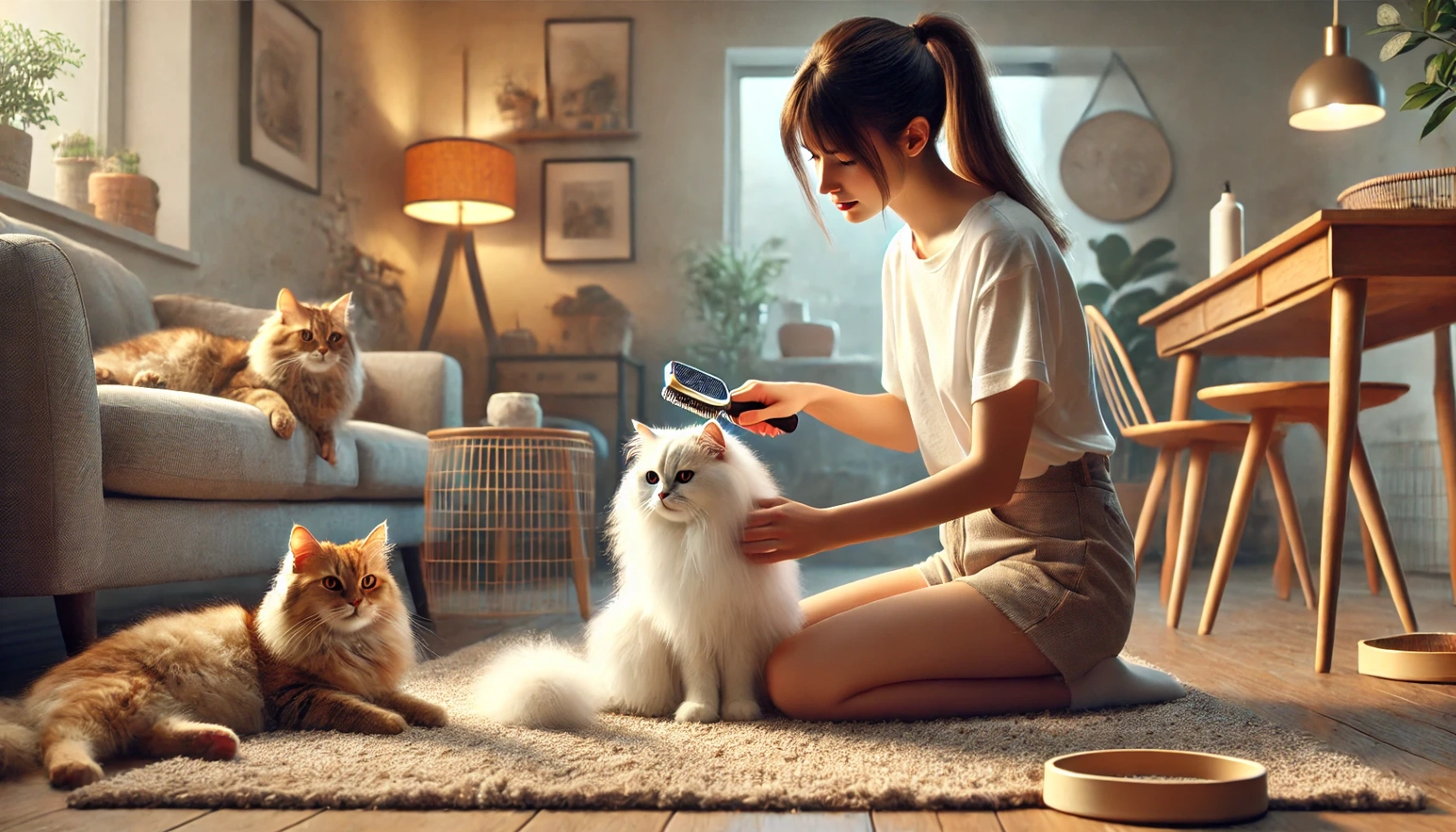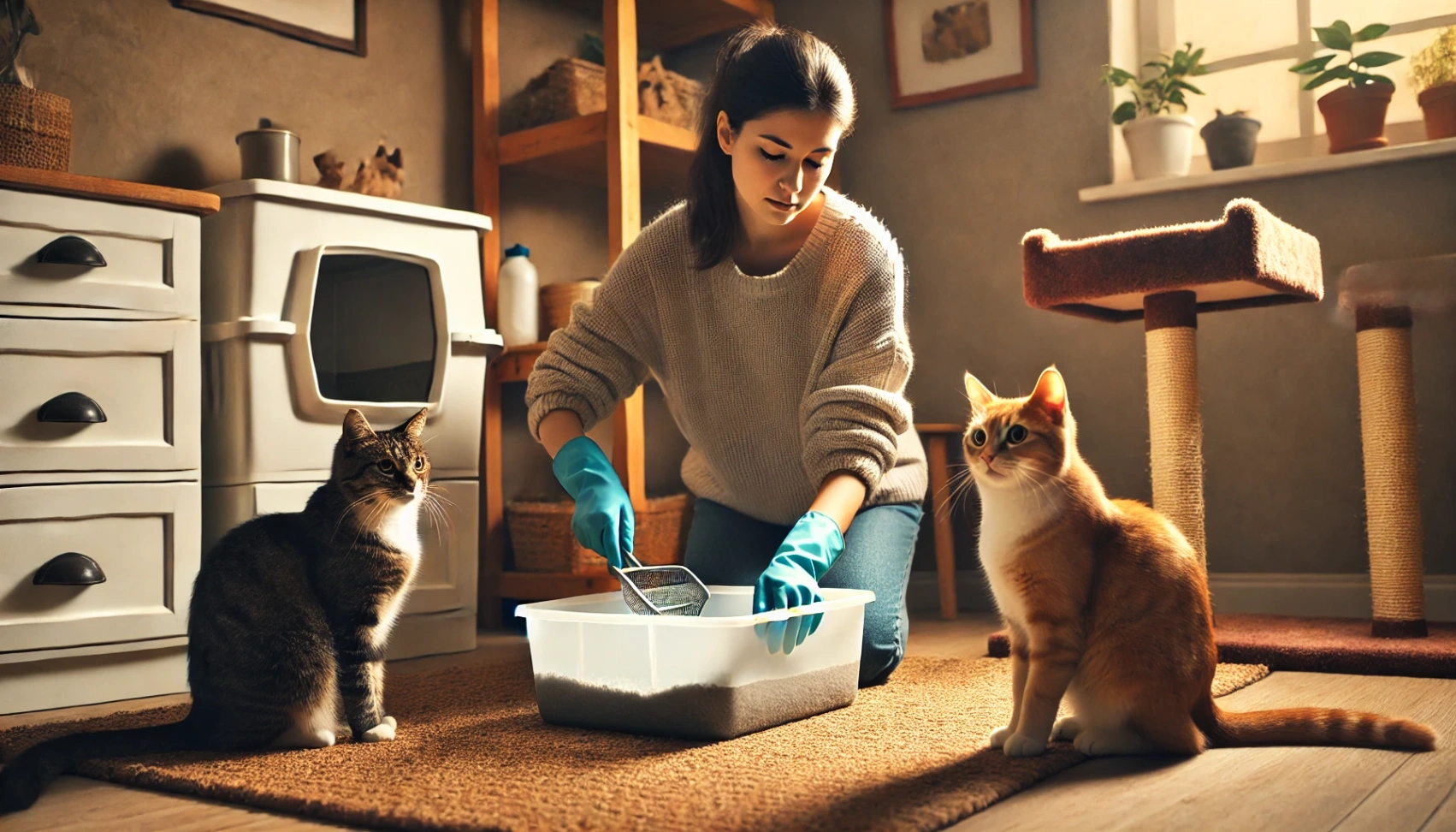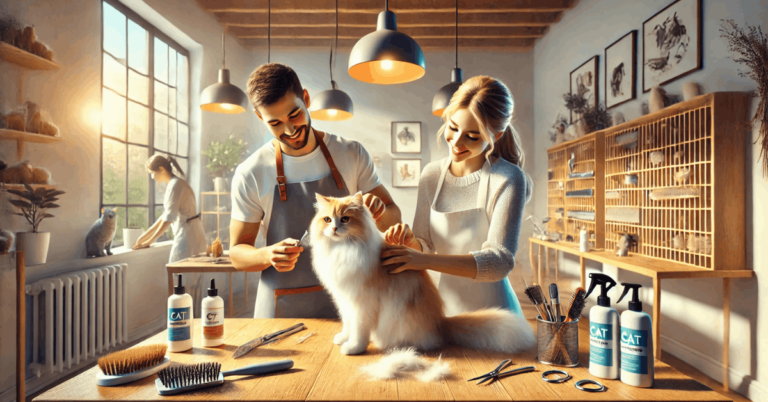Cat Hygiene Basics are essential for keeping your feline healthy and comfortable.
Proper hygiene prevents hairballs, unpleasant odors, and other common concerns.
This guide provides practical tips to manage hairballs, control odors, and maintain your cat’s cleanliness.
Understanding Hairballs
Hairballs are clumps of fur that cats ingest while grooming themselves, which can accumulate in their stomach.
They occur because cats’ tongues have tiny barbs that trap loose hair, which is then swallowed and sometimes not fully digested.
Prevention Tips:
- Brush your cat regularly to reduce loose fur.
- Feed your cat a specialized hairball control diet.
- Ensure your cat stays hydrated to aid digestion.
- Add fiber to their diet to help fur pass through the digestive system.
- Use hairball prevention treats or supplements.

Regular Grooming Essentials
Grooming is vital to keeping your cat healthy, comfortable, and free from common hygiene issues.
Regular grooming minimizes shedding, reduces hairballs, and helps maintain a clean coat.
Brushing:
- Brush your cat daily or weekly, depending on their coat type.
- Use the appropriate brush or comb for short-haired or long-haired cats.
Fur Maintenance:
- Check for tangles, mats, or debris in your cat’s fur.
- Use a detangling tool for mats, or trim them carefully.
Eye Cleaning:
- Wipe away tear stains or discharge with a damp, soft cloth.
- Use vet-approved eye cleaners if necessary.
Ear Cleaning:
- Check ears regularly for wax, dirt, or odors.
- Use a cat-safe ear cleaner and cotton ball (never cotton swabs).
Paw and Nail Care:
- Trim your cat’s nails every 2-4 weeks to prevent overgrowth.
- Check and clean their paws to remove dirt or debris.
Bathing (If Needed):
- Bathe your cat only when dirty, using cat-safe shampoo.
- Avoid frequent bathing to prevent drying out their skin.
Skin and Coat Health:
- Look for signs of irritation, dryness, or pests during grooming.
- Consult a vet for any unusual findings.
Bathing Your Cat
Bathing a cat isn’t always necessary, but removing dirt, allergens, or odors when it gets particularly messy is essential.
Since most cats groom themselves, baths should be done occasionally and correctly to avoid stress.
Prepare the Supplies:
- Use a cat-safe shampoo and avoid products meant for humans or dogs.
- Gather a non-slip mat, towel, and a small cup or sprayer for rinsing.
Choose the Right Time:
- Bathe your cat when they’re calm and not overly energetic.
- Avoid bathing them if they’re already stressed or anxious.
Use Lukewarm Water:
- Fill the sink or tub with a few inches of lukewarm water.
- Make sure the temperature is comfortable for your cat.
Be Gentle and Quick:
- Wet your cat gradually to avoid scaring them.
- Lather and rinse thoroughly, ensuring no shampoo residue is left.
Avoid Sensitive Areas:
- Keep water and shampoo away from your cat’s eyes, ears, and nose.
- Use a damp cloth to clean their face instead.
Dry Your Cat:
- Wrap your cat in a soft towel to dry them gently.
- Use a pet-safe blow dryer on a low setting if necessary, but most cats prefer air drying.
Reward Them Afterward:
- Offer treats or cuddles to make the experience positive.
- This helps build trust for future baths.

Litter Box Hygiene
Selecting the right litter and litter box is essential for your cat’s comfort and hygiene.
A good choice reduces odors, minimizes mess, and encourages consistent use, ensuring you and your cat stay happy.
Litter Type:
- Clumping vs. Non-Clumping: Clumping litter makes scooping easier, while non-clumping absorbs moisture well.
- Material: Options include clay, silica, natural (corn, wheat, pine), or recycled paper. Choose one that suits your cat’s preference and sensitivities.
- Dust-Free Litter: Reduces respiratory irritation for both you and your cat.
Scented vs. Unscented:
- Scented litter masks odors but may irritate sensitive cats.
- Most cats often prefer unscented litter.
Litter Box Size:
- Choose a box large enough for your cat to move comfortably.
- A general rule is the box should be 1.5 times the length of your cat.
Litter Box Type:
- Open Box: Provides ventilation and is easier to clean but may allow odors to spread.
- Covered Box: Contains odors and mess but may make some cats feel confined.
Number of Boxes:
- Provide one box per cat, plus one extra. This helps prevent territorial issues and ensures availability.
Placement:
- Place the box in a quiet, easily accessible location.
- Avoid areas with loud noises or high foot traffic.
Maintenance:
- Scoop daily and replace litter weekly.
- Wash the litter box regularly with mild soap to prevent odor buildup.
Dental Hygiene for Cats
Good dental hygiene prevents plaque buildup, bad breath, and gum disease, keeping your cat healthy.
Brush Their Teeth
- Use cat-specific toothbrushes and toothpaste.
- Start gradually to help them adjust.
Offer Dental Treats
- Use treats designed to reduce tartar.
- Ensure they are vet-approved for effectiveness.
Provide Dental Toys
- Choose toys that clean teeth as they chew.
- Use durable, cat-safe materials.
Use Water Additives
- Add vet-approved plaque-reducing solutions to water.
- Ensure your cat accepts the taste.
Regular Vet Check-Ups
- Schedule dental exams during annual visits.
- Get professional cleanings if needed.
Pest Prevention
Preventing fleas, ticks, and mites keeps your cat healthy and comfortable. These pests irritate and can spread diseases, so proactive care is essential.
Use Preventive Treatments:
- Apply vet-recommended flea and tick treatments.
- Follow the correct dosage and schedule.
Keep Their Environment Clean:
- Wash your cat’s bedding often.
- Vacuum carpets and furniture to remove pests.
Check for Pests Regularly:
- Look for fleas, ticks, or skin irritation.
- Inspect after outdoor activities or animal contact.
Limit Outdoor Exposure:
- Keep cats indoors or supervise outdoor time.
- Use pest-repellent plants in outdoor areas.
Consult Your Vet:
- Ask about year-round pest prevention.
- Treat infestations quickly to avoid issues.
Nail and Paw Care
Caring for your cat’s nails and paws is essential for comfort and health.
Proper nail trimming prevents overgrowth, while clean paws help avoid infections and discomfort from dirt or debris.
Trim Nails Regularly:
- Trim nails every 2-4 weeks to prevent overgrowth.
- Use cat nail clippers and avoid cutting them quickly.
Inspect Paws Often:
- Check for cuts, swelling, or stuck debris.
- Clean paws with a damp cloth as needed.
Provide Scratching Posts:
- Use scratching posts to help wear down nails.
- Place them in areas your cat likes.
Moisturize Paws If Needed:
- Apply cat-safe balm for dry or cracked paws.
- Avoid human lotions, which can be harmful.
Watch for Issues:
- Look for limping, licking, or redness.
- Consult a vet if something seems wrong.
To Sum Up
Caring for your cat’s hygiene, from grooming to dental care and pest prevention, is essential for their health and happiness.
Following these simple tips, you can keep your cat comfortable, clean, and free from common issues like hairballs, odors, and infections.
Start implementing these practices today to ensure your cat lives a healthier and happier life.


